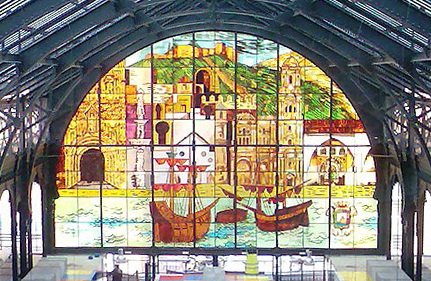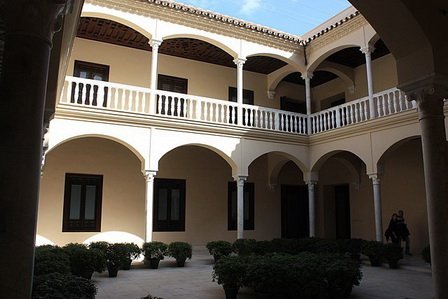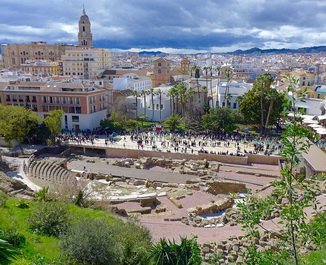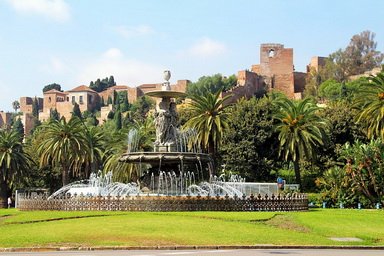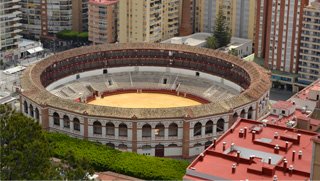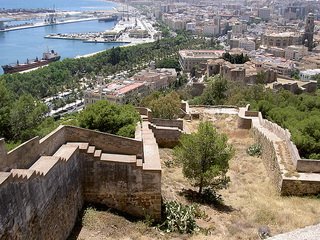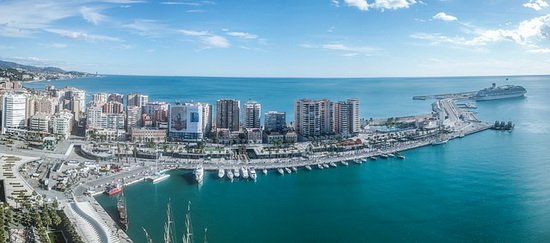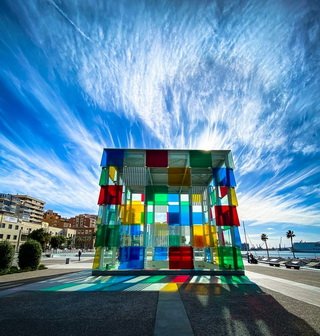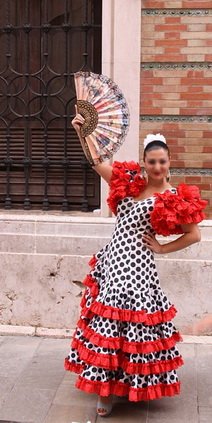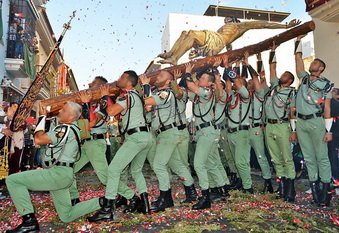Main attractions
View on the map
1 Cathedral de Málaga
The one-armed lady of Málaga stands proud and beautiful not far from the port and the ruins of Alcazaba. It is an impressive edifice that surprises you on so many different levels.
It was built for over 200 years from the XVI to XVIII centuries. It may be “contemporary” for what we normally imagine thinking about a cathedral, but it gives the building its special charm. The exterior and the facade are in the Baroque style – you see it clearly when you look up at the towers, windows, and follow the gentle, sculpted lines.
It is heavy at the street level, located close to the other buildings. Everything combined attacks your senses until you find a square or a garden that suddenly changes your feelings. The architect – Diego de Siloe had two towers planned, but the money allowed only one to be built. This is where the cathedral’s nickname comes from – la Manquita (one-handed). As it goes, it is still the second tallest tower of Andalusia – 84 meters high.
The interior is from yet, another era – with plenty of Renaissance patterns. It is a typical church – with a nave and 2 aisles. The chapels represent many styles from gothic to neoclassicism – take your time to explore, look at the paintings and the sculptures.
There is also a free open-air museum on the premises. Follow the path to the cathedral’s gardens and you will find it. It is quite informative, with many interesting exhibits. You can also climb a bell tower – the views are worth it.
2 Mercado de Atarazanas
The city’s food market is in a place where the Nasrid founded their shipyard in the XIV century. They were later, successively turned into warehouses, arsenal, military hospital, and barracks. There was even talk about demolition but in 1870 a project of Joaquin Rucoba was approved – the place was turned into a new market.
You can visit it today and profit both from the sights and from the multitude of products to buy and eat. Apart from the delicacies, tourists come here for the southern arch – architecturally different, but now a part of the new structure. It is the only one surviving from the Nasrid period – it allowed access from the port area. You can still see the original decoration.
The other distinctive feature is the market’s glass window. It is a 108 panel, stained glass representation of different monuments of the city. It was added during the restoration works of 1973 and is often photographed.
3 Museo Picasso
Located 200 meters away from the place where Pablo Picasso was born, this museum is the shrine to the artist. It was opened by the King and Queen of Spain in 2003. It is a place one of a kind – with 155 works donated by the Picasso family to create the foundation for the collection. It is both the story of Cubism and of Pablo Picasso. There are paintings, loans from other places, photographs of the painter at work, or enjoying his daily life. The local library has only books on Picasso and is one of the most complete in Spain.
The building itself is a jewel of art. The museum is inside the XVI century Buenavista Palace (meaning the palace of the counts of Buenavista)! The rest lies on the foundations of dozens of houses in the old Jewish Quarter. It was Richard Gluckman, the architect, who drew the plans that changed the palace and incorporated the museum into the area. The style of the building is praised by many and the museum was awarded the Institute Honor Awards for Architecture.
Places close to the Picasso family were left standing. This includes a nursery where young Pablo was taken as a child and a small museum where his father used to work. Everything together depicts over 8 decades of the artist’s life and work.
Be sure to count the queue time if you are planning to enter. The crowds may be huge sometimes.
4 Teatro Romano
Right at the footsteps of the Alcazaba, next to the modern-day city of Málaga and Museum of Picasso lie the ruins of a Roman theatre. Every proper roman civitas had to have one to entertain the people.
The excavations resurfaced the theatre in 1951. They have been a part of the everyday life of the citizens that passed it every day. Even today you can easily see the space for the spectators and the seats going up to 16 meters. There is no need to buy a ticket – it is just next to the pathway.
The seats have some aisles for the newcomers to come and sit down – same as in today’s theatres. The building was much bigger than what you see now. Not much was left until this day. The seats were usually on the slopes of the neighboring hill – which was a customary location for this type of edifice. The entrance hall and the actors and administration compartment are what is missing.
In time more will be excavated, but much was destroyed by the growing city. Some of the stones were also used by the Moors to build the fortress of the Alcazaba. There is an interpretation center next to it so it will present to you more facts and some great audio-visual aids.
5 Alcazaba
The Moors ruled Málaga for eight centuries. Even after the Reconquista, when they submitted to the Christian rule… they were still here, although they were called Mudéjars then. A culture ruling for such a long time is bound to have an influence.
Málaga has one of their fortresses, created in the XI century to overlook the port activities. She is one of the best-preserved in the country, so don’t hesitate to visit. It was once connected to the city ramparts by the 3 outer walls. Today only two remain.
It is still impressive. You cannot imagine attacking it with all these towers above your head. It is located on a small hill, but back in the day it was perfect – both defensive and overlooking the trade activities. It is built in this special Arab style that mixed war attributes with the palace commodities. You can get there in different ways but the most pleasant one leads through the surrounding gardens, which are also a part of the edifice. Because it is younger than the fortress of Granada it is sometimes called “small Alhambra”.
Check out Torre de Homenaje (Tribute Tower) – it is a ruin today, but once Ferdinand and Isabela raised their standard there in 1487. Go around the rooms of the palace which bear this characteristic Moorish style. Also – don’t forget about the local museum.
6 Plaza de Toros de la Malagueta
Bullfighting is another tradition of Spain. It is more common in the South, where you can find a multitude of arenas. Málaga has one, as one would suppose. It is a new building from the end of the XIX century, built in the neo-mudéjar style. It looks like a colosseum from the old times and fits perfectly to the city’s style.
It has everything you would think of in a place that keeps bulls: stables, pens, dressing rooms, and the bullfighting administration. It has more – today it is a headquarters of the Centro Cultural La Malagueta. Some of the rooms and corridors were turned into exhibition spaces. It tells visitors the story of the most famous tradition in Spain. But it also hosts some temporary displays on different subjects like music or dance.
The bullfights take place occasionally, mostly during the special seasons like the fair of August. The best matadors come to Málaga to show their talent. It is an art, a sport, and a dangerous hobby. Visitors can watch it either from the seats of the arena or from much further away – the slopes of the Gibralfaro Fortress.
7 Castillo de Gibralfaro
131-meter hill of Málaga was a strategic point since the beginnings of the city. The Moors probably constructed their fortress on the remnants of the old one. There is also talk of a lighthouse from the Phoenician times.
The first stones were laid here around the X century, so even earlier than the Alcazaba’s on the bottom of a hill. These “upper and lower castles” are related to each other by the outer walls. A walk on the ramparts is a great experience, although you need to watch your step. Until today – this is the most impressive part of the Gibralfaro.
The name of the fortress comes from the word “gabel” and “faro” – roughly translated “a stone light/lighthouse”. For centuries it had a military purpose and only in the middle of the XX century it was turned into a tourist spot.
The views and the walls are the main points of interest, but there is also a small, interesting museum on the premises. One of the stories that it tells is of the famous 3-moths siege led by the Catholic royals – Isabela and Ferdinand. It would have been longer, but the Arabs ran out of food.
The best way to visit is to climb the path and the steps leading from the old town up. There will be some viewpoints, shade of the pines and eucalyptus trees planted there in 2005, and the feeling of victory at the end. Worth every step! You can also take a bus or a taxi… maybe a cable car in the near future.
If you are only passing through Málaga and don’t have much time, this is a place to visit. You can see the other attractions from afar (Teatro Romano, Alcazaba, etc) and you have the carpet of the city at your feet.
8 Playa Malaqueta and the port
The main beach of Málaga is called la Malagueta, although you will find many more in the suburbs following the cost.
Its greatest feature is the distance you need to cover to get there – just a short walk from the city center. On your way, you can pass the art of Soho, go through the Parque of Málaga or wander around the shops of the local marina. Dealer’s choice as they say…
Each one has some advantages. Soho may be a place to avoid but the murals and local art act like magnets. The area will probably change in the future due to the number of tourists that started to frequent it.
The Parque of Málaga is a lovely stretch of green where you can hide from the sun and watch green parrots. You would expect sparrows in a place like this, but no!
As for the marina – it is a modern-day place, but it has a charm that only a port can have. There are great restaurants, bars where you can eat some tapas and spy on the white sails, and the energy you may be looking for.
What’s most important – at the end of the road there will be la Malagueta. Gold-white beach, blue sea… all of it only 10-minute away from the overcrowded city. If you don’t like tanning – go for a walk, because it seems to be stretching for miles. Eat or drink something, check out the water-sports centers. There is everything from paragliding to a dolphin tour and even quads.
9 The Cube aka Centre Pompidou de Málaga
If you know the Centre Pompidou in Paris, your thinking is already on the right track. But you probably cannot imagine that this is an offshoot of the original gallery – the first one that they have opened outside France.
Pablo Picasso was the reason… the birthplace of the artist was the perfect spot to present to the public the art from the XIX to the XXI century. The building is marked by a spectacular, modern, colorful cube, which you cannot miss walking the park or heading to the beach of Málaga. It has already become a recognizable part of the city, and the gallery was built here in 2013.
The venture was supposed to be temporary, but the partnership was recently prolonged until 2025. Apart from the permanent collection, there are temporary exhibitions and programs devoted to dance, performance, cinema, and others.
Be sure to pass next to it on your walk to/from the marina and take note – there is an offer of free admission on Sundays after 4 PM.
10 Museo de Arte Flamenco Juan Breva
A fiery dance of flamenco lies in the core of Spain’s and Andalusia’s Heritage. The mesmerizing performance cannot be missed. The same goes for this museum which will bring you closer to the soul and history of this dance.
The place is run by the Juan Breva Club – named after a famous singer and dancer. The museum has 3 floors, one of them is turned into a bar and a performance area with 80 seats. Friday nights are the time of a free singing show, whereas the first Saturday of each month is reserved for lunch+performance event.
Other floors are full of exhibits. Posters and paintings of the known fingers and dancers. Memorabilia of Cante Jondo – one of the most spiritual among flamenco styles. You will also see guitars, costumes, figurines, and sculptures connected to flamenco, a library, and hundreds of photos.
11 Events
Semana Santa is the Holy Week of Easter that is an important moment all over Spain. Málaga is quite serious about it, probably because of a number of catholic brotherhoods that live here. On this special week, they organize processions that are lavishly decorated. The floats will amaze you, but the somber atmosphere will remind you that this is a holy time.
The opposite happens in August (Feria de Agosto) – this is the month of fun. Not necessarily a carnival, but you can think about it in this way. It commemorates the 14 August 1487, when Málaga was finally taken after the siege of Queen Isabela and King Ferdinand. A week of festivities gives you a good look at the Andalusian culture, flamenco, and bullfights. The city is decorated, they drink sherry everywhere and the feeling of joy is overwhelming.


